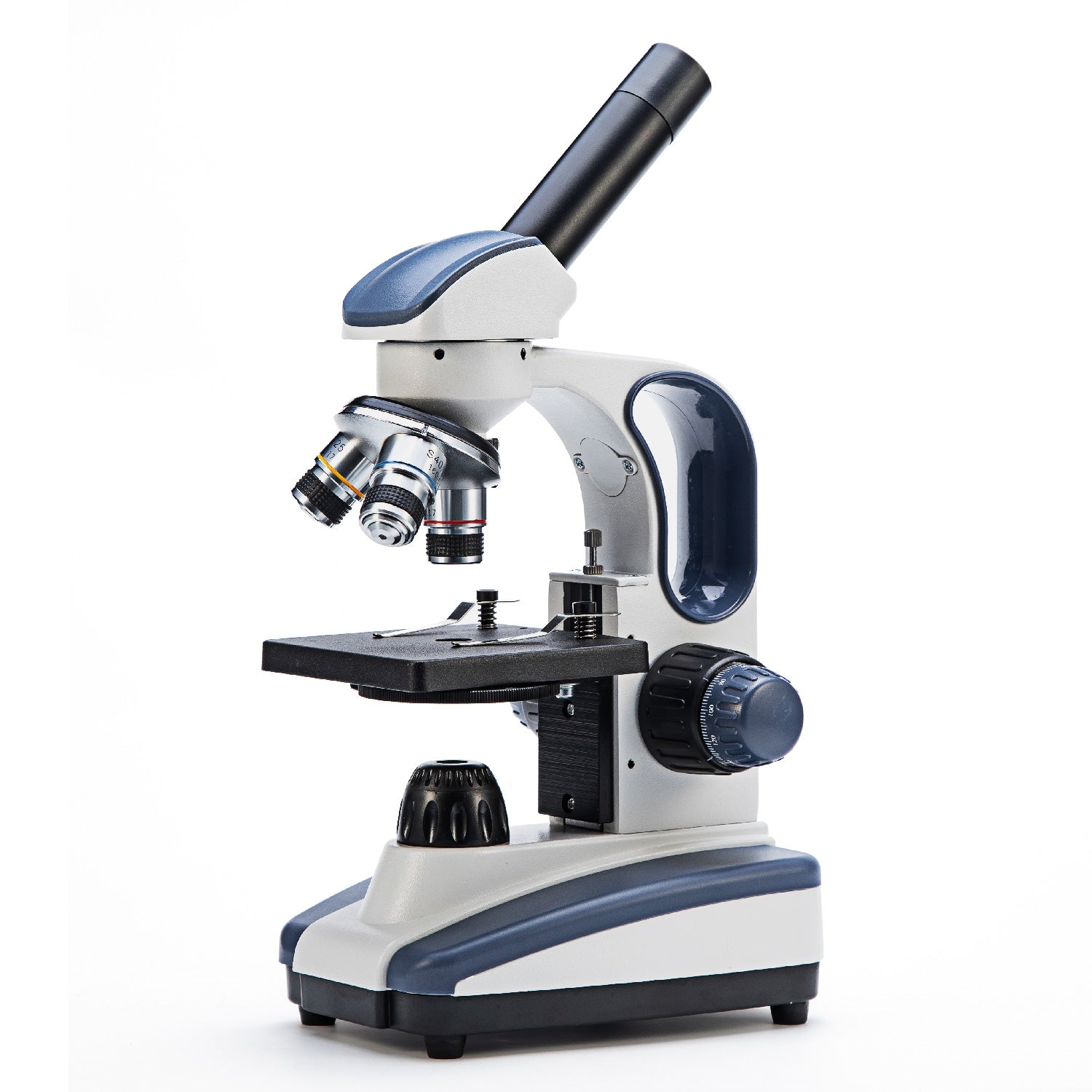Designed for middle and high school students and hobbyists, perfect for science fairs, at home experiments, and school lab experiments!
Fully rotatable monocular head for easy shared use or one-on-one instruction in the classroom
Available magnification settings of 40X, 100X, 250X, 400X, and 1000X through aberration-correcting 4X, 10X, and 40X glass objectives with wide-field 10X and 25X eyepieces
Powerful, brightness-adjustable LED light gives you full control over illumination while also protecting eyesight and specimens
Rugged design with metal arm and base, carrying handle, and cordless capability make this microscope a practical pick for field experiments
Created for middle- and high school-aged students as well as hobbyists looking for an upgrade, the Swift SW200 monocular compound microscope packs a powerful punch in a solid frame. With all glass optics, sturdy metal body, carrying handle, and battery-powered cordless capability, the SW200 is a rugged, yet portable, microscope built to take you from at-home experiments to science fairs and beyond!
Magnification levels range from 40X-1000X. Three aberration-correcting glass DIN objective lenses (4X, 10X, and 40X) paired with two wide-field glass eyepieces (10X and 25X) offer sharp images without edge blur. The monocular head is fixed at an ergonomic 45 degree angle to prevent neck-strain and fully rotates to enable sharing between multiple users, ideal for classroom or one-on-one instruction.
The powerful LED bulb provides cool light from below the stage for transparent specimens, with dimmer wheel and disc diaphragm for controlling brightness. Precision coaxial focusing knobs on both sides of the metal arm allow you to make minute adjustments easily.
What can you see with it? Compound microscopes offer detailed cellular-level views of transparent or dyed specimens prepared and mounted on a slide. For example, see paramecia in water, cross-sections of onion skin or insects, and even blood cells! (For magnifying solid objects, use a stereo microscope.)


